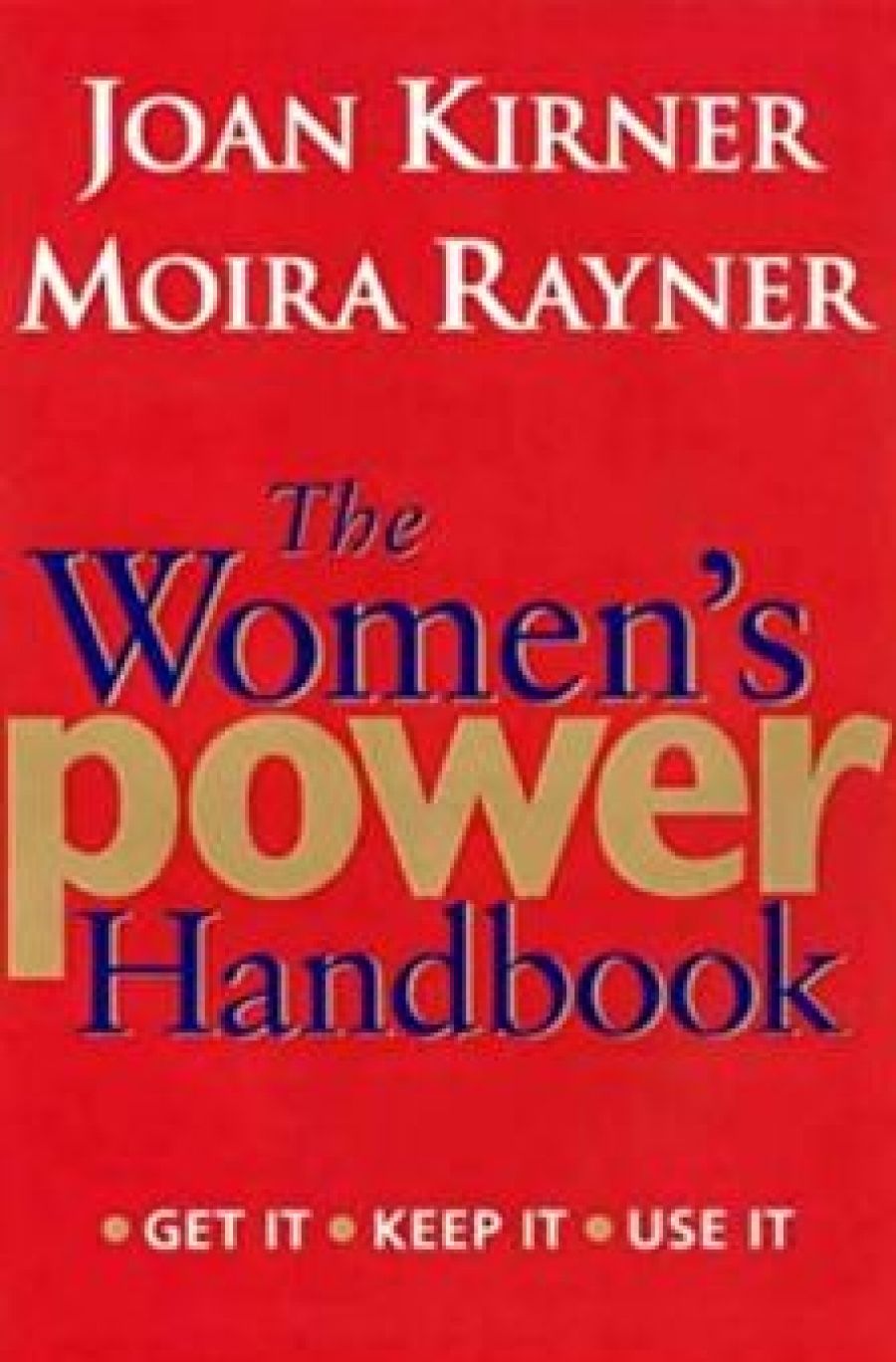
- Free Article: No
- Review Article: Yes
- Article Title: Women and the power game
- Online Only: No
- Custom Highlight Text:
What do women want and how can they get it? These questions were at the heart of second wave feminism. The Women’s Power Handbook focuses on the second of these queries. The idea for the book was born when Moira Rayner and Joan Kirner met touring Victoria with Naomi Wolfe. On their travels they were struck by the questions that young women asked. Most of these related to practical issues about power. How to get it and, more important, how to use it without compromising integrity. According to the authors, no feminist tracts were providing young women with the answers that they needed, and this is what they set out to do in The Women’s Power Handbook.
- Book 1 Title: The Woman’s Power Handbook
- Book 1 Biblio: Viking, $24.95 pb, 326 pp
The book had a second genesis. When Moira Rayner’s marriage broke up, her father gave her a toolbox, so that she could do her own household repairs. This book is supposed to act as a kind of tool kit so that women can become more self-reliant and empower others to create more equable communities. The authors attempt to discuss power, be it personal, collective, communal, or found in the workplace. They try and show how power can be used with others, rather than against them. Their subject is meritorious. However, the writers’ new version of ‘If I had a hammer’ ends up sounding strangely like that American pop song, ‘Learning to love myself’.
Kirner and Rayner insist that theirs is not a self-help book, and much of it is devoted to the ways in which the empowered self can work with others. But The Women’s Power Handbook still ends up reminding me of those American self-esteem manuals in which all power flows from personal confidence. Although its subject is power, there is little analysis about why women find themselves disempowered. Considering that both of the writers have shown that women can run with the wolves, it seemed reasonable to expect that their book would contain some coherent analysis of power relations pertaining to the female situation. However the most obvious political message from The Women’s Power Handbook is a new version of the ‘personal is political’. Not that personal life reflects wider social forces, but that personal growth is the cornerstone of becoming a potent force.
Thus the first half of the book is full of advice – a lot of it probably worth considering – about rest, exercise and domestic organisation. As well the authors tell us about ways in which we can understand both ourselves and the system, be ‘clear’ and unafraid of success. But the question remains: if becoming powerful were that simple, why are so few women doing it? Are we really so disorganised, unfit, unclear, afraid, and badly rested? Of course not. Kirner and Rayner have given detailed but in the end simple solutions to a series of complex problems.
The authors have moved too far from the feminist tracts that did not provide the answers to the original questions that inspired the book. It is in their discussion of women in the workplace that this becomes most obvious. They tell us not to be ‘Judas Sheep’ – that is, people who lead others into danger and are then rescued by those in power. In other words, they suggest we show solidarity with other women, that we network and make collective demands for change. All of this is well and good. However, the authors seem to presume that even in a deregulated marketplace reason will prevail. More important, they presuppose women have common interests that are based upon gender, without really telling us why this should be so. As economic rationalism bites and more and more women particularly are thrown upon their own resources to survive, an analysis of why solidarity is at the same time difficult and fundamental to women’s interests seems essential.
I wanted very much to like The Women’s Power Handbook, having nothing but admiration for its authors, and at times I did. The stories that they tell about their own experiences are particularly engaging. But in the end, it fell flat because Kirner and Rayner seemed at the same time to be giving advice to the uninitiated, while assuming that their audience knew why women should act collectively.
In the early sixties, Betty Friedan referred to the complex power relations that partly determined women’s experience as ‘the problem that has no name’. These social forces were later referred to as sexism, a deceptively easy term that requires constant reappraisal. This was sadly missing in an important book which had promised to reveal significant things about power relations to a new generation of women.


Comments powered by CComment